Ukraine Today
Watch and Read about Ukraine Today

Ukraine information
Street view of Ukrainian cities on Google
Visiting Crimea
Ukraine's diamond
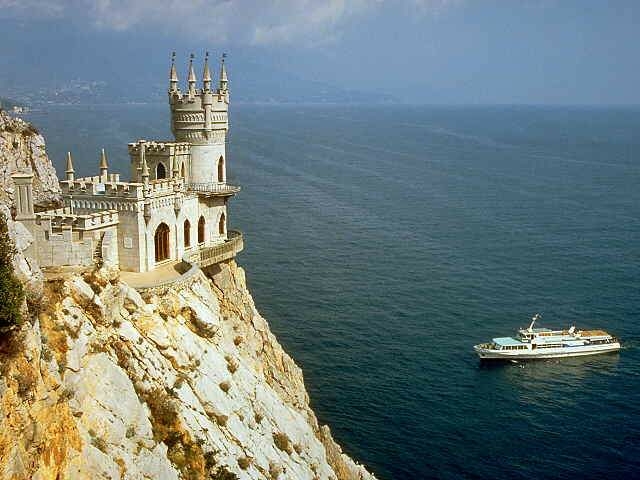 Crimea is often described as "the Ukraine's diamond-shaped peninsula that juts out into the Black Sea". Crimea is the diamond for UKrainian tourism industry, and not only for tourism. Being one of the most fascinating corners of Ukraine due to it's subtropical clinate, with the most varied scenery, the amazingly rich history, and the crossroads location through milleniums.
Crimea is often described as "the Ukraine's diamond-shaped peninsula that juts out into the Black Sea". Crimea is the diamond for UKrainian tourism industry, and not only for tourism. Being one of the most fascinating corners of Ukraine due to it's subtropical clinate, with the most varied scenery, the amazingly rich history, and the crossroads location through milleniums.
The climate of the Crimea's South Shore is near-mediterranean, making Crimea's beaches the most desired vacation destination for millions of Ukrainians, Russians and growing numbers of foreigners each year. As the peninsula is famous for its mineral waters as well as wines, health resorts, guest houses and recreation hotels abound on this tiny piece of land.
A chain of rocky mountains that rise to 1500 m above sea level, stretches all the way along the coast line, creating special climatic environment all along this area.
When the season is up
The tourism season in Crimea begins with the first days of May and lasts till mid-October. The peak of tourist "invasion" is always connected weith the temperature of sea water on the beaches, and happens in July and August. This is the warmest time of the year, and thousands of people tend to spend their vacation on the Black sea coast.
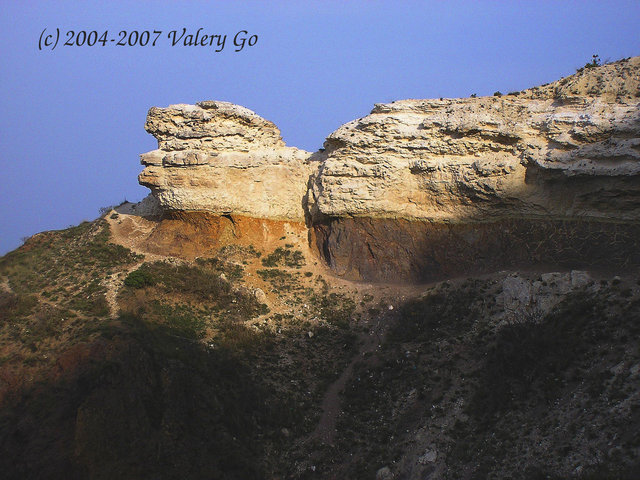 Those who do not care for lying on the beach, tend to visit Crimea in mid-April or closer to the end of October. September is also a perfect time to enjoy the resorts with less crowds, but October brings wonderful color, smells to the peninsula. Even during winter months which bring occasional snowfalls there are usually periods of sunshine every day. Spring in Crimea begins in early April and is especially scenic, with Crimea's wide variety of flora all in bloom. Summer itself can be scorching hot at times, especially when there is no wind. Keep tabs on the weather in Crimea by visiting our Crimea weather map.
Those who do not care for lying on the beach, tend to visit Crimea in mid-April or closer to the end of October. September is also a perfect time to enjoy the resorts with less crowds, but October brings wonderful color, smells to the peninsula. Even during winter months which bring occasional snowfalls there are usually periods of sunshine every day. Spring in Crimea begins in early April and is especially scenic, with Crimea's wide variety of flora all in bloom. Summer itself can be scorching hot at times, especially when there is no wind. Keep tabs on the weather in Crimea by visiting our Crimea weather map.
The Black Sea is not as warm as some seas, but the water reaches 22-25° C during summer months and is often warm enough to swim in till late October. However, a day or two of strong winds can cause chilly water to reach the surface and stay there till it warms, so it is hard to predict water temperature based only on air temperature. Go here for current water temperatures at Black Sea resorts (in Russian).
Transport to and about Crimea
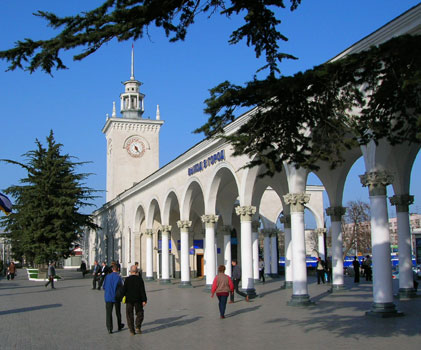 Crimea's transportation hub is Simferopol. Here is Crimean main airport is located, with flights from all larger Ukrainian cities and a number of international destinations. Most of the travelers pass Simferopol on their way to Yalta and Crimea's Black Sea resorts.
Crimea's transportation hub is Simferopol. Here is Crimean main airport is located, with flights from all larger Ukrainian cities and a number of international destinations. Most of the travelers pass Simferopol on their way to Yalta and Crimea's Black Sea resorts.
Trains only go to a few cities - Simferopol, Sevastopol, Kerch, and Feodosiya. Other destinations along the coast must be reached by car or by bus. Yalta can best be reached by taxi (about $50 USD), by trolleybus ($3), or bus ($6) from the Simferopol train/bus station (100 km trip). Buses and minibuses are the most popular transport between cities in Crimea.
If you are planning to visit Crimea during the high season, book plane or train tickets far in advance (three weeks or more). At other times of year, one or two weeks is usually enough.
Crimea has an efficient transportation network consisting mostly of private minibuses, called marshrutka (more on traveling by bus in Ukraine). These inexpensive buses reach almost all places of interest. The hard part is finding out where they stop and which buses go where! You may have to do a lot of asking around like the Ukrainian and Russian tourists do.
Crimean resorts
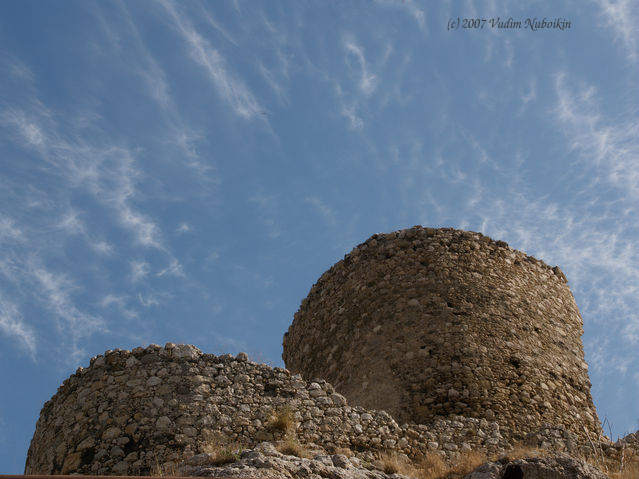 Crimea's most famous resort town is Yalta, which became a prestigious vacation destination in 19th century Tsarist Russia after the first road was built from Simferopol. Sevastopol, Alushta, Sudak, Feodosiya, Yevpatoriya, Saki, Koktebel, and Feodosiya are also well-known resorts. Sevastopol on the west end of the peninsula is more of a regular city than a resort; it is an navy town with shipyards and the headquarters of Russia's Black Sea fleet. Sudak has some awesome sights, and its beach front area has been very nicely developed. Yevpatoriya and Saki on Crimea's west coast are known for their soft sand beaches (most other beaches in Crimea are made of pebbles).
Crimea's most famous resort town is Yalta, which became a prestigious vacation destination in 19th century Tsarist Russia after the first road was built from Simferopol. Sevastopol, Alushta, Sudak, Feodosiya, Yevpatoriya, Saki, Koktebel, and Feodosiya are also well-known resorts. Sevastopol on the west end of the peninsula is more of a regular city than a resort; it is an navy town with shipyards and the headquarters of Russia's Black Sea fleet. Sudak has some awesome sights, and its beach front area has been very nicely developed. Yevpatoriya and Saki on Crimea's west coast are known for their soft sand beaches (most other beaches in Crimea are made of pebbles).
While each Crimean resort town has its unique set of sights and historical monuments, they are all alike in certain ways — there is always a beachfront area full of restaurants, discotheques, hot dog stands, musicians, jugglers, caricaturists, "find out how powerful your punch is" stands, and locals selling everything from trinkets made in China to fresh milk. If you enjoy hanging out at crowded beaches in the daytime and having fun at night, these resorts are for you. You'd probably enjoy spending a couple days in each town as you move down the Crimean coast.
If you'd like more solitude, Crimea has plenty of that to offer, too. There are hundreds of secluded health resorts and hundreds of kilometers of undeveloped coastal areas. Here you may come across folks who spend the entire summer living in caves by the beach, groups that spend weeks practicing yoga or meditation in remote corners of the peninsula, and of course nudists who have congregated in Crimea since Soviet times.
Sightseeing and Leasure
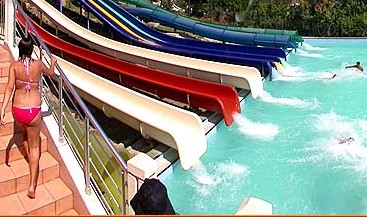 Crimea's incredibly varied relief and scenery provides wonderful opportunities for all kinds of outdoor recreation — hiking, cycling, mountain biking, horseback riding, spelunking, rock climbing, hang-gliding, scuba diving, windsurfing, and even skiing. Local travel agencies that specializing in outdoor recreation are available to organize these activities.
Crimea's incredibly varied relief and scenery provides wonderful opportunities for all kinds of outdoor recreation — hiking, cycling, mountain biking, horseback riding, spelunking, rock climbing, hang-gliding, scuba diving, windsurfing, and even skiing. Local travel agencies that specializing in outdoor recreation are available to organize these activities.
The Crimean Mountains are home to magnificent caves, forests of beech, oak, pine, juniper, and endemic species, windswept mountain plateaus, called yayly, and curious "cave cities" from the Middle Ages. The mountains are most accessible from Simferopol and the old Tatar town of Bakhchisaray, but you can also an aerial tram that goes from Miskhor (between Alupka and Yalta) to Ay-Petri mountain at 1200 m above sea level. Here there is even downhill and cross-country skiing in the winter.
Part of Crimea's unique flavor comes from the presence of Crimean Tatars — mixed-blood descendents of all the ethnic groups that inhabited the peninsula before Ekaterina II annexed Crimea at the end of the 1700s. The Tatars were deported to Central Asia by Stalin after WWII (allegedly for helping the Germans), and Russians and Ukrainians were moved in to take their place. As a result much of the local color and cultural heritage was lost. After perestroika the Tatars began moving back, acquiring land and building homes and businesses. They are known for their industriousness, national cooking (which you can get a taste of at any Crimean resort), and 'eastern' mindset. The Tatars have weak ties to Islam (compared to Arabic countries) and usually speak fluent Russian along with their own language.
Read more about
Enjoy pictures of Crimea



